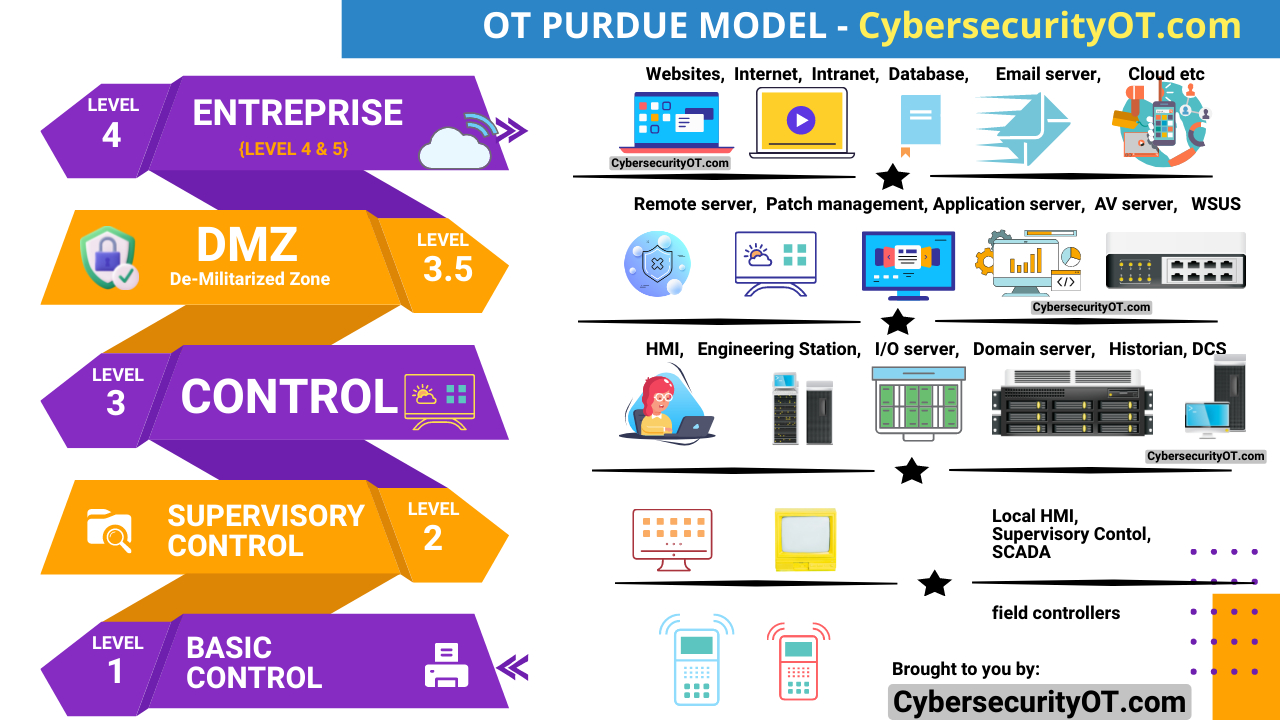Introduction:
The convergence of Information Technology (IT) and Operational Technology (OT) is transforming industries, allowing organizations to achieve new levels of operational efficiency, productivity, and innovation. This article explores the concept of IT-OT convergence, its significance, challenges, and methodologies. We will delve into the tools, technologies, and solutions used to enable IT-OT convergence and examine a real-world case study to highlight the benefits and outcomes of this convergence.
What is IT-OT Convergence?:
IT-OT convergence refers to the integration and alignment of traditionally separate domains of IT and OT within an organization. IT focuses on managing data, information systems, networking, and cybersecurity, while OT deals with operational processes, control systems, and industrial machinery. Converging these domains enables seamless communication, data sharing, and collaboration between IT and OT systems, leading to improved operational visibility, agility, and decision-making capabilities.
Why IT-OT Convergence is Needed?:
a) Enhanced Operational Efficiency:
IT-OT convergence enables real-time data collection, analysis, and visualization across the entire organization, facilitating better decision-making, predictive maintenance, and optimized operational processes. This results in improved efficiency, reduced downtime, and enhanced productivity.
b) Cost Reduction:
By leveraging shared infrastructure and resources, organizations can achieve cost savings through consolidation, standardization, and centralization of IT and OT systems. Additionally, convergence eliminates the need for redundant technologies, streamlines maintenance, and optimizes resource allocation.
c) Improved Security:
Converging IT and OT systems enhances cybersecurity by enabling a unified approach to threat detection, monitoring, and incident response. It allows organizations to implement consistent security measures, such as network segmentation, access controls, and encryption, across the entire infrastructure.
Challenges for Converging IT/OT:
a) Technology and Legacy Systems:
IT and OT systems often use different technologies, protocols, and standards. Legacy OT systems may lack compatibility with modern IT infrastructure, posing challenges for integration and interoperability.
b) Cultural and Organizational Differences:
IT and OT departments traditionally operate in separate silos with different goals, priorities, and skill sets. Overcoming cultural resistance and fostering collaboration between these departments requires strong leadership, communication, and change management strategies.
c) Security Risks:
Converging IT and OT exposes operational technology to potential cyber threats that were previously limited to IT environments. Securing a converged infrastructure requires a holistic approach that addresses the unique security requirements and vulnerabilities of both domains.
Performing IT-OT Convergence:
a) Assess Current State:
Conduct a comprehensive assessment of existing IT and OT systems, infrastructure, processes, and capabilities. Identify gaps, overlaps, and potential areas for convergence.
b) Establish Governance Structure:
Develop a governance structure that brings together representatives from IT, OT, and relevant stakeholders. Define roles, responsibilities, and decision-making processes to ensure effective collaboration and accountability.
c) Standardize and Integrate Technologies:
Implement standardization strategies to align technology stacks, protocols, and interfaces between IT and OT systems. Integrate data sources, enable data exchange, and establish common communication frameworks.
d) Enhance Network Infrastructure:
Upgrade network architecture to support the increased data traffic and bandwidth requirements resulting from IT-OT convergence. Implement secure network segmentation, virtual private networks (VPNs), and robust firewall configurations to ensure proper segregation and protection of critical systems.
e) Implement Data Analytics and Visualization:
Deploy advanced analytics tools and platforms to collect, analyze, and visualize data from both IT and OT systems. This enables organizations to gain actionable insights, drive predictive maintenance, optimize processes, and support informed decision-making.
f) Cybersecurity Integration:
Develop a comprehensive cybersecurity strategy that encompasses both IT and OT environments. Implement security controls such as intrusion detection systems, endpoint protection, encryption, and continuous monitoring to detect and mitigate threats across the converged infrastructure.
Tools, Technology, and Solutions for IT-OT Convergence:
a) Industrial IoT (IIoT) Platforms:
IIoT platforms facilitate connectivity, data collection, and analytics across IT and OT systems, enabling seamless integration and interoperability.
b) Edge Computing:
Edge computing brings processing and analytics capabilities closer to the source of data generation, reducing latency and enabling real-time decision-making at the edge of the network.
c) Protocol Gateways and Translators:
These tools bridge the gap between different protocols and facilitate communication and data exchange between IT and OT systems.
d) Data Historians and Analytics Tools:
Data historians capture, store, and analyze time-series data, enabling organizations to derive actionable insights and support data-driven decision-making.
e) Cybersecurity Solutions:
Integrated security solutions, including network monitoring tools, intrusion detection systems, security information and event management (SIEM) systems, and vulnerability assessment tools, help protect the converged infrastructure from cyber threats.
Conclusion:
IT-OT convergence is a transformative approach that enables organizations to leverage the power of data integration, collaboration, and advanced analytics to drive operational efficiency and competitive advantage.
By bridging the gap between traditionally separate IT and OT domains, organizations can enhance operational visibility, optimize resource allocation, improve decision-making, and strengthen cybersecurity. Overcoming challenges such as technology compatibility, cultural differences, and security risks requires a strategic and holistic approach.
By implementing the right tools, technologies, and solutions and following best practices, organizations can successfully establish an IT-OT convergence framework that unlocks the full potential of their industrial operations. The benefits of IT-OT convergence extend beyond immediate operational gains, driving organizations toward a more connected, efficient, and resilient future.












